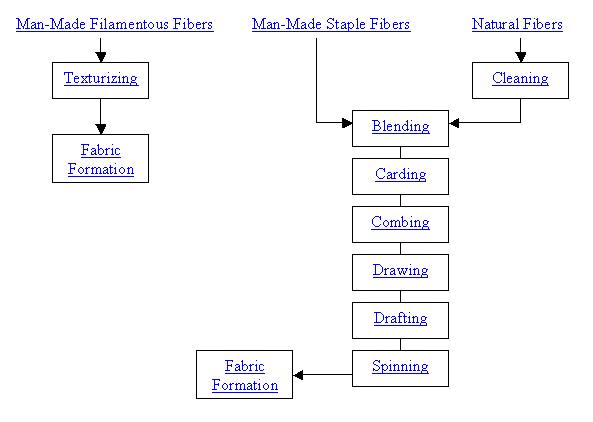
Textile fibers are converted into yarn by grouping and twisting operations used to bind them together. Although most textile fibers are processed using spinning operations, the processes leading to spinning vary depending on whether the fibers are natural or manmade. The flow diagram below shows the different steps used to form yarn. Note that some of these steps may be optional depending on the type of yarn and spinning equipment used.
Natural fibers, known as staple when harvested, include animal and plant fibers, such as cotton and wool. These fibers must go through a series of preparation steps before they can be spun into yarn, including opening, blending, carding, combing and drafting. Man-made fibers may be processed into filament yarn or staple-length fibers (similar in length to natural fibers) so that they can be spun. Filament yarn may be used directly or following further shaping and texturizing.
